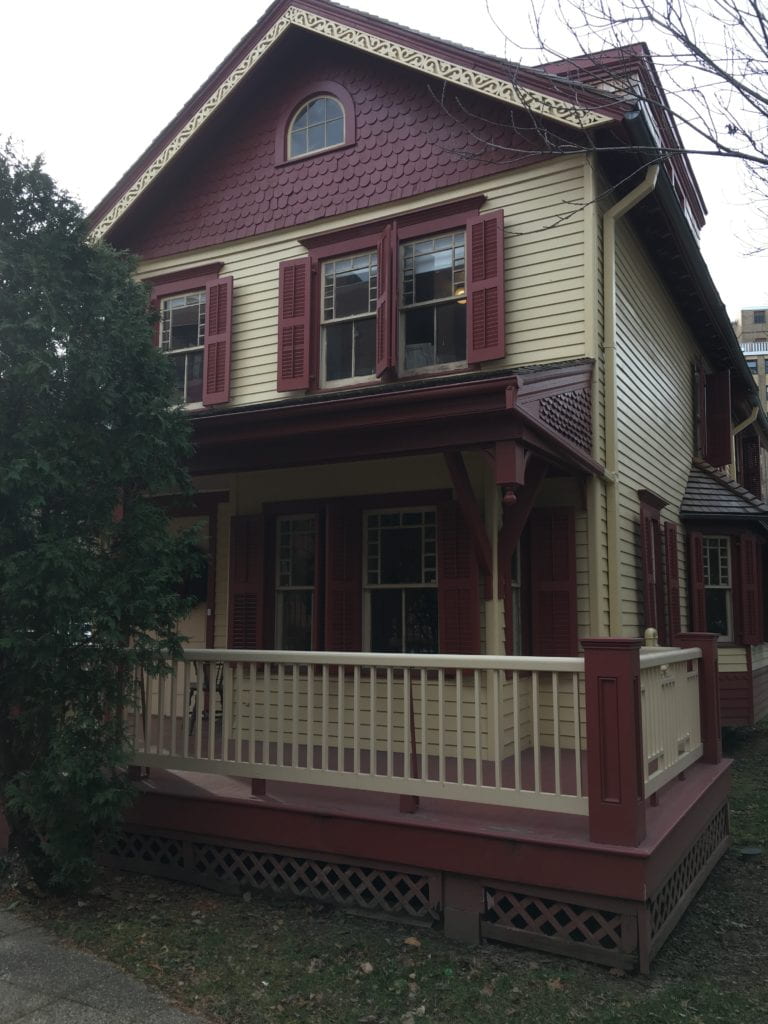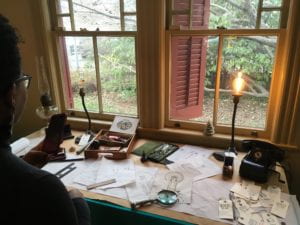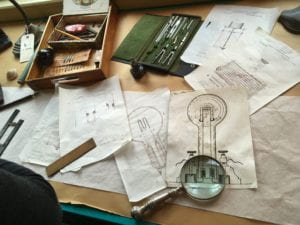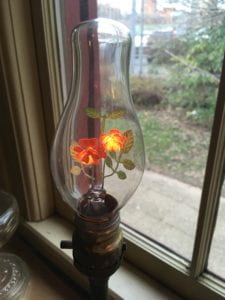On December 5, 2018, we visited The Lewis Latimer House in Flushing, Queens. It’s a pity we didn’t get to the Latimer House during the course of the grant, because Latimer was the epitome of Humanities for STEM– a draftsman, inventor, painter, writer, and musician. Latimer’s most notable accomplishments were creating the technical drawings for Alexander Graham Bell’s telephone patent and improving upon Edison’s incandescent lightbulb, inventing a longer-lasting carbon filament.

The Latimer House is a restored Queen Anne-style house, which was landmarked and re-located to NYC Parks space (behind the NYCHA Lewis Latimer Houses) in 1988. Our tour guide, Alexandra Unthank, told us the house was brought under the umbrella of NYC Parks and moved in an effort to preserve it from development happening around its original location in Flushing, Queens. As a result, the house is a bit out of context, but a very welcome surprise after blocks of tall, brick apartment buildings, adult daycares, and auto part shops. Lewis Latimer lived in the house from 1903 until his death in 1928. The house remained in the Latimer family until 1963. Family members helped to establish the Lewis Latimer Trust and to preserve the house as part of Latimer’s legacy.

The house is set up for tours, with panels in each room detailing Latimer’s personal and professional life. Objects owned by Latimer as well as notebooks, drawings and inventions are also on display.

One of the most impressive aspects of Latimer’s life is that he had no formal education. He was the son of escaped slaves (b. 1848) who lied about his age to join the Union Navy in 1864. While in the Navy, he began to teach himself mechanical drawing, a skill that led to a job at the patent office. While he built an impressive resume, working with the notable inventors Bell, Edison, and Hiram Maxim, he was often the only black man in the company. He faced considerable racism when he was sent to London to install electric street lighting; designs that he had invented, but the Brits doubted he was actually the person in charge.

Latimer kept journals of his travels and professional life, but rarely mentioned racism. Unthank explained that Latimer seemed to be aware these journals would be kept and read, so he usually maintained a professional focus, however the racism he faced in London must have been so egregious that it was noted.
At the end of the tour we took a peek at the Tinker Lab, originally an addition built by Latimer for his work, it’s now a space for k-12 students to continue Latimer’s legacy of electrical inventions by exploring circuits and code. We’re hoping to connect the education team at the Latimer House with some of our NYU Tandon engineering students, who could serve as wonderful teachers and role models to younger students!
The Lewis Latimer House is free and open to walk-in visitors Wednesdays, Fridays, and Sundays from noon to 5 pm. Groups of 6+ need to register in advance and pay $5/person. It is also available for k-12 group tours from 9:30-noon on weekdays. The house is ADA accessible, service animals are welcome, and trained educators/docents are on-site during open hours to assist visitors with special needs.
Phone: (718) 961-8585
Email: lewislatimerhouse@gmail.com
Address: 34-41 137th St. Flushing, NY 11354
Sign up for LatimerNOW Newsletter
